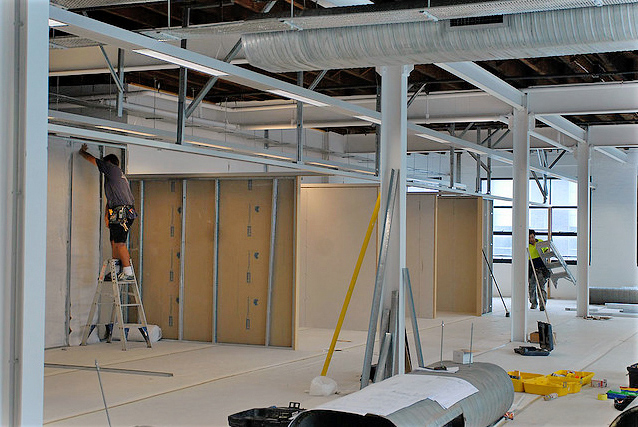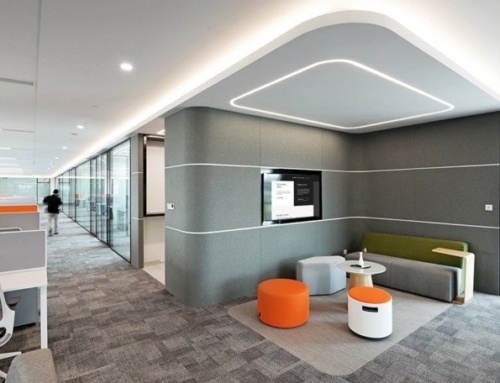It’s important to iron out the details of any work a tenant needs to customize a space to their specific use or needs. Before anything is signed, both the tenant and landlord need to clearly understand who is responsible for what. This is most commonly done with either a Turnkey TI or a TI Allowance. Which begs the question, which is more beneficial to a tenant? A TI Allowance or a Turnkey TI?
What Is a Turnkey Tenant Improvement?
A turnkey approach, also known as a Turnkey TI, has the landlord assuming most of the responsibilities when it comes to getting a space move-in ready for the tenant. The landlord will often offer the space for a lower monthly rent or lease amount. They will also use a contractor of their own choosing to perform specified work within the timeframe outlined in the lease terms.
Is a Turnkey Tenant Improvements Good or Bad?
On the surface, Turnkey TIs look to be incredibly tenant friendly. In fact, that’s how landlords present them.
“You have no worries! We’re taking care of everything so you can move right in!”
The problem with a Turnkey TI is you really have no idea what the landlord is spending on tenant improvements since it’s buried in your monthly lease rate.
That’s not a problem if the existing space just needs some minor alterations. For instance, if it just needs some new carpeting or fresh paint. However, in most cases, you aren’t familiar enough with the space until you’re completely moved in. It’s then when you start to find out this or that is wrong.
Turnkey deals are generally built around basic needs – drywall, plumbing and electrical upgrades, acoustical ceilings, new carpeting or flooring, etc.
This leaves out many upgrades that you’ll later learn were much more necessary. Things like heating and cooling upgrades, new windows, furniture, and other things will end up being deemed “tenant requested extras” once the turnkey approach is rolled into the contractual agreement.
It’s important to remember that a landlord’s primary goal with the turnkey approach is to get any renovations or buildouts completed at a lesser cost than a TI allowance would cost. The turnkey approach also allows any landlord to potentially take shortcuts to drive down costs like using discounted materials, cheaper contractors, or non-union labor.
What Is a TI Allowance?
A Tenant Improvement Allowance, also known as a TI Allowance or a TIA, gives the tenant greater control of the design and construction. The landlord agrees to foot the bill for “Improvements & Alterations” up to a specified dollar amount. This amount is stated per-square-foot. For tax purposes, these costs can be written off as either a capital improvement for the property or a cost associated with lease acquisition. The tenant bears responsibility for anything over this agreed-upon amount. Occasionally the landlord may offer “free” rent for a month or two. This enables the tenant to use the money they’ve saved on rent to cover additional renovation or build out expenses.
A tenant improvement allowance is seldom given directly to the tenant. The landlord generally directly pays the selected contractor up to the agreed-upon TIA amount. If a landlord does give the TIA directly to the tenant to pay to contractors, the tenant must keep in mind that the IRS may view this as taxable income.
Benefits of a TIA
The risk for construction overruns and their associated expenses increase if the landlord does the construction themselves or chooses the contractor. In these instances, there’s no incentive for the landlord to keep costs down since they’re not responsible for paying for anything beyond the amount they agreed to.
Since TIAs do give tenants greater control over the process, the job should be posted for multiple contractors to bid on. From there, the sealed bids should be opened in the tenant’s presence and they should have a say in who gets the job. All of this can be insisted in the lease clause. The motivation behind this is to prevent the landlord from choosing a needlessly expensive contractor or someone they share a cozy relationship with.
If a tenant is leaning towards going the TI Allowance route, they should have a general idea of how much design, labor, permits, and construction will run with some extra money factored in for unforeseen complications that may emerge.
Understanding costs like this will help the tenant ensure the proposed TIA allowance paid out by the landlord is fair. They’ll also understand how much out of pocket money they’ll have to come up with if the TIA funds are exhausted. Since TI Allowances aren’t typically allocated towards Furniture, Fixtures & Equipment (FF&E), the tenant should also prepare for expenses associated with office furnishings, cubicles, cabling, and moving costs.
Tenant Improvement Allowances are rightfully the tenant’s. This allows for some bargaining power like written declarations stating they can be used for a wide range of expenses beyond labor and contractors such as architect or attorney fees, permit or moving costs, and any hours devoted to selecting a contractor or obtaining permits. Additionally, while not a common occurrence, something should be put into writing regarding unused TIA funds being credited towards rent.





